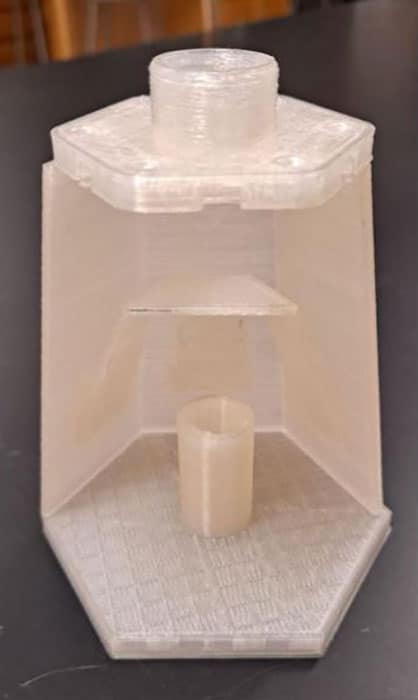The prevalence of lead in drinking water poses a significant public health threat. Millions of homes, especially those in low-income communities, still receive drinking water through lead-containing pipes. Although various lead filtration systems exist, their high cost and large size can be barriers.
Now, a group of high school students and their instructor report a solution to the problem of lead contamination in drinking water – an inexpensive new filter that attaches to a faucet and removes lead from tap water.
Rebecca Bushway, who is the project’s principal investigator, was motivated after seeing a video of a woman in Michigan turning on her tap, and water came out brown with dissolved metals from her home’s pipes. Bushway wondered aloud to her upper-level high school chemistry class if there was a little filter that they could make from inexpensive components to easily remove lead.
Excited about the idea, the students started thinking about the project and discussed designs for a filter via the internet due to COVID-19 restrictions at the time. When they returned to the classroom last spring, they 3D printed a prototype using biodegradable plastic. The result is a 3-inch-tall water filter that screws onto the end of an existing sink faucet. It utilizes a mixture of calcium phosphate and potassium iodide powder, contained within a series of hexagonal structures through which the water spirals on its way down.

As the lead-contaminated water flows through the device, the lead first binds with calcium phosphate to form lead phosphate and free calcium. The calcium, which is harmless, ends up in the water, while the lead phosphate, which is an inert solid, is trapped inside the filter by a nylon screen on the bottom of the unit.
Once the reaction capacity of the calcium phosphate is reached, dissolved lead in the water reacts with potassium iodide, which turns the water yellow, an indicator that lead is present. This lets homeowners know that the filter is no longer functioning and needs to be replaced.
Next, the students plan to add a tiny spectrophotometer with a single-wavelength LED to the bottom of the filter cartridge. As soon as the spectrophotometer detects the yellow color of the lead iodide, it will trigger the LED to illuminate. Bushway says this will indicate that lead is in the water, even before the color is detectable by a human eye. The team’s goal is to make and sell their filters for less than $1 each, which Bushway thinks they’re on their way to doing.
“Ultimately, this experience has shown students that they can make a difference to somebody, and there are problems that they can fix with science,” Bushway says. The team members are presenting their research at a meeting of the American Chemical Society.
